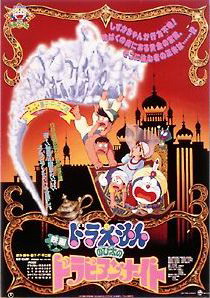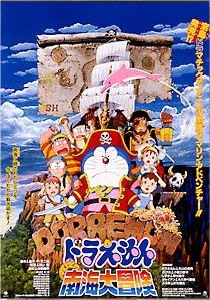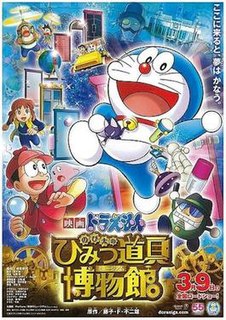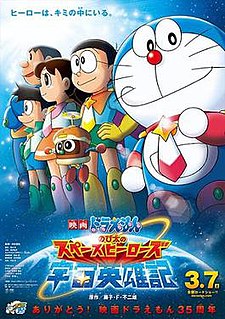It has been requested that the title of this article be changed to Doraemon (2005 TV series) . Please see the relevant discussion on the discussion page. Do not move the page until the discussion has reached consensus for the change and is closed. |
| Doraemon | |
|---|---|
 English Doraemon logo | |
| Country of origin | Japan |
| No. of episodes | 537 [1] |
| Release | |
| Original network | TV Asahi |
| Original release | April 15, 2005 – present |
| Season chronology | |
Doraemon(ドラえもんDoraemon) is the most recent anime TV series based on Fujiko Fujio's manga of the same name. Produced by Shin-Ei Animation and Asatsu-DK, it began airing on TV Asahi on April 15, 2005.

Anime is hand-drawn and computer animation originating from or associated with Japan.

Fujiko Fujio was a pen name of a manga writing duo formed by two Japanese manga artists. Their real names are Hiroshi Fujimoto and Motoo Abiko. They formed their partnership in 1951, and used the Fujiko Fujio name from 1954 until dissolution of the partnership in 1987.
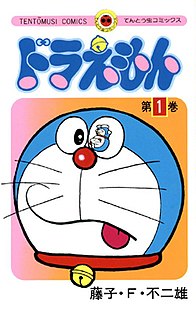
Doraemon is a Japanese manga series written and illustrated by Fujiko F. Fujio, the pen name of the duo Hiroshi Fujimoto and Motoo Abiko. The series has also been adapted into a successful anime series and media franchise. The story revolves around a robotic cat named Doraemon, who travels back in time from the 21st century to aid a boy named Nobita Nobi.
Contents
- Production
- US English Dub
- UK
- Plot
- Characters
- Episodes
- Cast
- Japanese cast
- US English cast (2014-2015)
- UK English cast
- Crew
- US English dub 2
- UK English dub
- Music
- Opening themes
- Ending themes
- DVDs released in Japan
- References
- External links
This Doraemon anime series is sometimes referred to in Asia as the Mizuta Edition (水田版), after Wasabi Mizuta, the voice actress who voiced Doraemon in this series. [2]
Wasabi Mizuta is a Japanese voice actress. She currently resides in Iga, Mie and is previously represented by Kenji Utsumi's Ken Production.
An edited English dub produced by Bang Zoom! Entertainment has been airing on Disney XD in the United States since July 7, 2014 and has been given a TV-Y7 rating. [3] [4] A second season of the English dub premiered on Disney XD on June 15, 2015 [5] and ended on September 1.

Bang Zoom! Entertainment is an audio post-production studio with its headquarters in Burbank, California in Greater Los Angeles. It has worked on anime, video games, television series, feature films, and original animation projects. It is a renowned anime dubbing company, providing English voice-over work.

Disney XD is an American pay television channel that is owned by The Walt Disney Company through Disney Channels Worldwide. Aimed primarily at children ages 6–15, its programming consists of original first-run television series, current and former original series and made-for-TV films from sister network Disney Channel, theatrically-released films, and acquired programs from other distributors, including Pokémon the Series: Sun & Moon and Beyblade Burst









